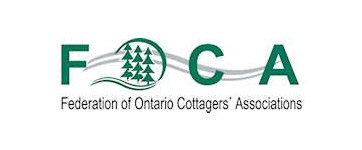Winter is over, the temperature is in double digits, and the idea of a trip to cottage country before the summer crowds descend is enticing. You imagine taking a kayak or canoe out onto sparkling water or fishing off the dock in the peace of a spring day. And, cottage rentals are inexpensive at this time of year.
What’s stopping you?
Not much needs to stop you, but before you make those plans, it’s a good idea to learn a little about how cottage country transitions from winter to summer and how that might impact your planned spring getaway.
When does the ice come off the lake?
It’s been a long winter in cottage country – in some areas they’ve see record snowfall and the late onset of spring leads some to believe it could be well into May before the ice goes off the lakes.
If you are planning your summer vacation this is unlikely to impact those plans. However if you’re thinking of having an early break there’s a few things you need to know about how cottage country transforms from a winter wonderland to the idyllic summertime vacation playground you are dreaming of.
When is the “Ice Out”?
This is a topic of deep discussion in Tim Horton’s and local breakfast haunts in lakeside areas, as predictions of the date the ice will go out are avidly argued. On Belmont Lake in the Kawartha region, in my 14 years of living there, the earliest was in late March and the latest in the last week of April, so there is some wide variation.
As the ice melts and the lake surface warms up, the ice decreases in density and begins to mix with the water beneath, ‘turn over’ occurs. The ice goes grey and becomes layered with the water beneath then the stratified ice sinks below the surface.
This winter, with periods of intense cold, not much of a spring thaw and deep snow to insulate the ice, some lakes won’t see the ice off the lake until late April with some predicting it will be May before they see water sparkling in the sunshine again.
Lake Levels
Water levels in many of our lakes fluctuate throughout the year, and the level in spring is usually highest as the snow melts. Some waterways are governed by a series of dams that control the amount of water flowing into and out of lakes. ‘Draw down’ happens in the fall as lake levels are lowered in anticipation of the spring rise, however, when there are unusually high amounts of snow, the water can rise to a degree where it’s unsafe to install docks.
What does this mean for a spring vacation?
There’s a couple of things you need to know.
Cottage owners cannot put their dock in until it’s safe to do so, and there is no point anyway if the water level is so high, the dock is going to be underwater. Also, most installations require someone to get into the water – yes, actually get wet in near-freezing water temperatures. This is not cool. Well, actually it is, but you get the picture.
You may be able to use a kayak or canoe, but remember as above, the temperature of the water is such that should you capsize you would be affected by hypothermia in minutes. Tragedies occur every year when visitors ignore warnings and conditions and fail to recognize the risks of going out on the water.
That is not meant to be a downer on your spring cottage trip aspirations because it’s a great time to experience life outside the city. Just be aware of what’s around you, take precautions and you’ll have a great time.






